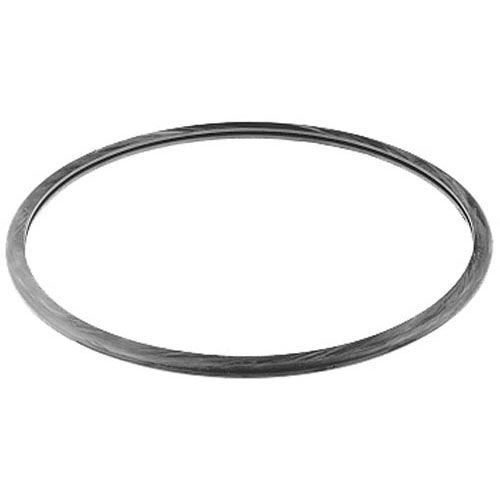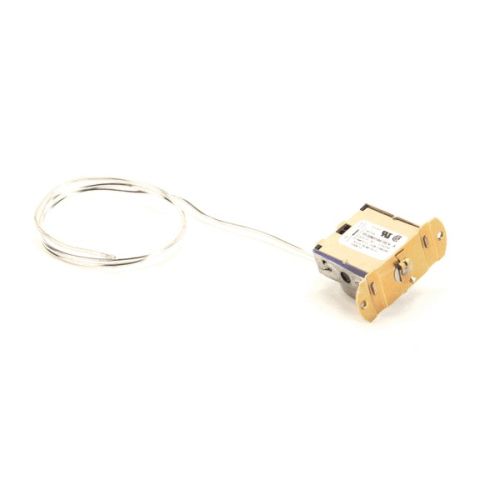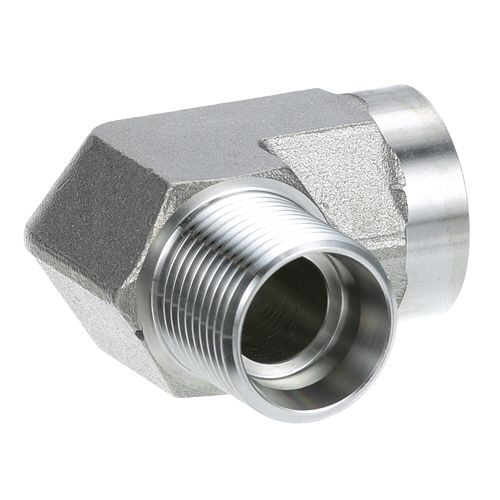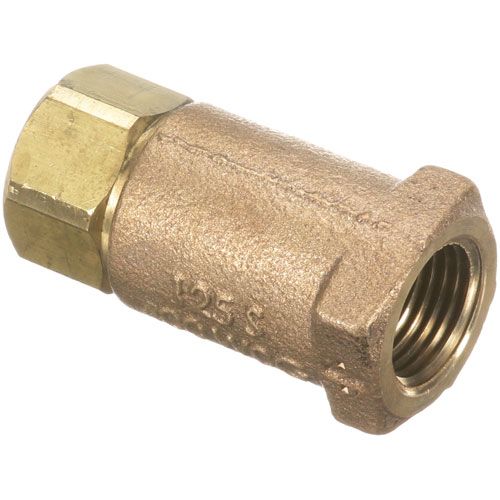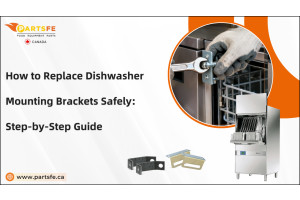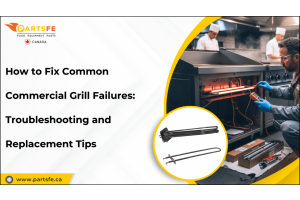Food Costs in Restaurants: The Ultimate Guide on How to Manage
In the busy commercial restaurant industry, Food cost management is the key to becoming successful in business. Serving delicious dishes and delivering excellent service are the main reasons for attracting customers. Well-planned strategies help you to control food costs so that your restaurant will be running without any serious financial challenges. With the right decision, you can increase your food costs which leads to better profit margins and ensures long-term success without any hurdles.
This article provides practical techniques for restaurant owners and managers for better management of food expenses, which can be beneficial in reducing waste. Get ready to find out the efficient ways and drive your restaurant to heights in the competitive market.
Why Food Costs Matter
Restaurants allocate 25% to 40% of their total sales to food expenses which represent their biggest operational cost. Essential to run a profitable business stands the control of these costs. Efficient management of food costs enables substantial profit margin growth which creates a more stable business operation.
The sustainable development of your restaurant depends on proper control of food expenses. Better cash flow results from controlling food expenses which enables business reinvestment and market competition.
Good cost control of food enables restaurants to determine their menu prices at competitive levels without compromising product quality. Your restaurant will succeed in attracting customers and maintaining profitability through proper balancing of costs.
How to Calculate Food Costs
The accurate calculation of food costs requires understanding before implementing any management strategies. The calculation of food cost percentage requires tracking both food expenses and sales data. Your understanding of the foundation enables you to make decisions leading to optimal restaurant profitability.
Formula for Food Cost Percentage:
-
The food cost percentage formula enables organizations to calculate how much revenue goes toward purchasing ingredients. The food cost percentage calculation requires dividing total food costs by total sales and multiplying the result by 100.
Food Cost Percentage=(Total Food Costs / Total Sales)×100
Track Food Costs:
-
Maintain comprehensive records for all food acquisitions while you should monitor inventory levels regularly. Followed stock usage records enable you to compare purchase quantities with sales data which leads to better identification of material waste along with optimized food expense management.
Weekly and Monthly Reports:
-
weekly and monthly food cost evaluations enable you to detect market trends ahead of time and implement timely corrections. Early adjustments become possible through this process to avoid excess spending while maximizing profits.
Also read on: How to Calculate CFM for Optimal Commercial Kitchen Ventilation
How to Optimize Your Menu Design for Better Profitability and Efficiency
properly designed menus maximize ingredient expenditure while cutting down waste production and promoting profitable dishes. The use of improper portioning and flexible ingredients allows businesses to handle food expenses well. The system enables profitability with quality maintenance and satisfied customers.
Menu Engineering Tips:
-
Profitability Focus: The restaurant should place high-margin menu items at the forefront to boost overall profit. Customers should find prepared items reasonably attractive for the menu. Menu items that receive proper attention from customers generate more sales while boosting profit margins.
-
Cost-Effective Ingredients: The chef should utilize ingredients that serve dual purposes since this practice optimizes ingredient potential while minimizing kitchen waste. The use of multi-purpose ingredients allows operators to maintain low costs while giving them the freedom to update their menus during the different seasons of the year.
-
Portion Control: The restaurant should normalize portion sizes to create uniformity and prevent excessive portion sizes. This controls food expenses simultaneously while serving customers delicious meals by required standard portion sizes.
-
Menu Pricing: You should decide your menu prices by calculating the full expenses of ingredients and labor plus overhead costs. By implementing this method restaurants achieve pricing equilibrium that benefits customers and maintains their business profitability.
-
Remove Low Performers: Sales data analysis should be checked regularly to detect which items do not perform well. Your restaurant will succeed better by eliminating unprofitable and unpopular dishes to concentrate on popular items that generate higher profits.
Check out Plant-Based Dining: The Next Big Shift In The Restaurant Industry For 2024
How to Negotiate with Suppliers for Better Prices and Quality
Developing positive bonds with suppliers enables businesses to obtain superior prices alongside improved service dependability. You should explore opportunities for extended payment periods and bulk discount negotiations during regular negotiations. Business partnerships that have strong result in both dependable product quality and stable supply conditions.
Supplier Negotiation Tips:
-
Bulk Orders: Buying ingredients in bulk allows you to take advantage of discounts, reducing overall food costs. This works best for high-usage items with a long shelf life, ensuring you never run out of essential ingredients.
-
Quality vs. Price: While it’s tempting to opt for cheaper options, maintaining quality is key to customer satisfaction. Choose suppliers that offer both good pricing and reliable, high-quality products to avoid compromising your reputation.
-
Comparison Shopping: Regularly compare prices from multiple suppliers to ensure you’re getting the best deals. This keeps your food costs competitive and can reveal potential savings by switching suppliers or renegotiating terms.
-
Long-Term Relationships: Building long-term relationships with suppliers fosters trust and consistency. By locking in contracts, you can secure better rates, guaranteed delivery, and stable pricing, helping with budgeting and cost control.
Practice Inventory Management
The management of inventory proves effective for both cost control of food items and waste reduction. Constant stock assessment enables you to avoid both excessive purchasing and wasted supplies.
Inventory Management Tips:
-
First In, First Out (FIFO): The FIFO method enables businesses to use their oldest stock before newer items thus minimizing spoilage and waste. The FIFO method enables proper inventory rotation by using fresh ingredients before older ones.
-
Track Usage: The rate at which ingredients get used enables accurate stock assessment which helps prevent unnecessary ingredient purchases. This process enables you to buy only necessary items, minimizing waste and unnecessary inventory collection.
-
Reduce Waste: The kitchen staff should follow portion control methods and proper food handling techniques to minimize waste. Regular training sessions for employees should include methods to use scraps efficiently and transform leftovers into new products for waste reduction.
How Proper Staff Training Can Help Control Food Costs and Improve Efficiency
The kitchen staff together with service personnel serve as essential components in food cost management. The right training enables staff members to execute procedures that reduce waste while boosting operational efficiency.
Staff Training Tips:
-
Portion Control: Educating kitchen staff about using standard portion sizes during preparation allows them to avoid over-portions and maximize ingredient availability. The practice controls expenses while reducing waste and preserving uniformity in meals offered to customers.
-
Waste Reduction: Food handling with proper storage plays an essential role in reducing spoiled food along with wastage. The staff needs training about proper ingredient handling procedures as well as waste reduction techniques that ensure food remains fresh through proper storage methods.
-
Menu Knowledge: Staff members need to master the menu contents by learning about ingredient expenses and profitable menu items. The staff can successfully promote high-margin dishes and suggest menu items that support the restaurant's objectives through this system.
-
Food Safety Protocols: Food safety guidelines prevent contaminants from reaching food which maintains the high quality of meals served to customers. Employee training about safety procedures creates continuous clean operations that both decrease waste and boost food quality standards.
How Embracing Technology Can Enhance Cost Control and Streamline Operations
The restaurant business benefits from technological implementation which results in operational efficiency improvement and better food cost management practices. Live restaurant management platforms in addition to POS and recipe software allow organizations to reduce waste and maximize their ingredient value. Technology solutions enable businesses to access live information which helps users make well-informed choices to sustain profitability.
Technology Tools:
-
Point of Sale (POS) System: Through POS system tracking a business can understand inventory patterns and make better pricing decisions. Using this system allows organizations to oversee order processes while ensuring cost management for their food supplies.
-
Inventory Management Software: Inventory tracking systems in real time help businesses to track stock levels while making efficient supply orders. The system helps prevent both situations where you order more than needed and situations where your essential ingredients run out.
-
Recipe Management Software: The software system helps organizations calculate ingredient expenses and maintain uniform recipes for consistent portioning that tracks food expenditure.
Monitor and Reduce Waste
Food waste is the primary reason behind increased food costs in restaurant operations. By detecting and diminishing waste operations achieve significant financial savings that benefit their profitability as well as sustainability efforts. Restaurants can minimize waste through established waste reduction strategies to better handle their ingredient supplies.
Waste Reduction Tips:
-
Track Waste: The assessment of kitchen waste should be performed regularly to identify improvement opportunities in spoilage and over-portioning. The assessment process enables organizations to minimize waste while streamlining their inventory management procedures.
-
Repurpose Ingredients: Hierarchical thinking combined with creativity allows you to turn unused ingredients and vegetable trimmings into stocks or transform fruit remains for making sweet desserts. Through this practice, both waste is minimized and ingredients gain added value.
-
Composting: Organic waste composting serves as a cost-effective method to decrease landfill expenses. Using compost as an eco-friendly approach reduces waste amounts while serving as a garden resource for home planting and supporting agricultural farms.
How Improving Portion Control Can Boost Profitability and Reduce Waste
Food cost management begins with controlling portions which represents a straightforward method to reduce expenses. Portion control changes that even seem small will accumulate substantial savings throughout the year.
Portion Control Tips:
-
Standardized Portions: Each dish served by kitchen personnel should receive consistent portion sizes through proper training.
-
Use Measuring Tools: The implementation of scales and portion scoops alongside additional tools will guarantee consistent results.
-
Reduce Plate Waste: The business could present meals in smaller portions to minimize food waste and customers should have the choice to modify portion sizes according to individual needs.
Adjust Menu Prices Regularly
Food cost changes because of seasonal variations and inflation require businesses to modify their menu prices. The failure to increase prices during necessary times can result in reduced profitability.
Price Adjustment Tips:
Monitor Costs Regularly: Mention ingredient prices closely because they change due to seasonal patterns and market fluctuations. Regular cost reviews of food expenses enable you to adjust prices effectively to maintain profitability.
Communicate Changes: Customers need to understand the reasons behind price increases during such decisions. The explanation of enhanced value and quality improvements alongside price adjustments helps customers stay loyal to the brand.
Small Incremental Increases: Your business should adopt a strategy of slow price growth instead of sudden major price increases. The gradual implementation of new prices enables customers to adapt to changes better while minimizing product price resistance.
How Monitoring Food Cost Metrics Can Drive Better Profitability and Efficiency
Restaurant needs to monitor essential food cost metrics for effective management of their food expenses. Attendance to tracking these metrics allows businesses to detect trends which helps control expenses and make knowledgeable strategic choices for better profitability.
Key Metrics to Track:
-
Food Cost Percentage: Monitoring your food cost percentage enables you to determine the amount of sales that goes toward ingredient expenses. The calculation of food cost percentage enables businesses to discover operational weaknesses and enhance their performance.
-
Menu Item Contribution Margin: You should examine the contribution margin between sales price and food cost for each menu item to determine profitability. Your business should concentrate on items with high margins which generate greater profits.
-
Inventory Turnover: Regular inventory usage and replacement measurements help you avoid overstocking your inventory. An organization's ability to replace ingredients frequently reveals efficient ingredient usage patterns which reduces both waste and enhances purchasing decisions.
A successful restaurant operation depends heavily on controlling its food expenditure. A system of inventory tracking along with menu optimization, portion control, and waste reduction through technology implementation enables organizations to maintain food costs and increase profit outcomes. Your restaurant business will serve both customers and profitability through these implemented strategies.
A perfect dining experience that inspires customers and brings lasting success emerges from managing costs together with maintaining top-quality food standards.
A restaurant operation benefits from both efficiency and profit margin when operators make modest adjustments to their food prices because these changes produce substantial cost reductions.
Tired of dealing with equipment breakdowns that drive up your food costs? PartsFe Canada has you covered with high-quality commercial restaurant equipment parts to maintain your kitchen running at high performance! From refrigerator compressors and oven heating elements to dishwasher motors and grill igniters, we provide the essential parts you need for smooth operations. Shop with us today and get back to your operations effortlessly!
FAQs
What is the most important step in controlling food costs?
Adhering to the principles of standard portions is crucial to keeping food costs in line. Without portion control, there is no consistency. This not only could have drastic effects on your food costs (having no real constant costs to budget for) but also on your customers
What are the five rules of cost control?
The five rules of cost control are important for the kitchen to function as a team and not have high levels of waste. The five rules of cost control are: order it well, purchase the right items, make it available, make it to the recipe, and don't let it die in the window.
Which restaurant would most likely have the highest Labour cost?
Sit-down and casual restaurants, however, tend to have a higher labor cost percentage, given the fact it takes you an hour to serve a guest rather than a few minutes. Specifically, fine dining restaurants can have some of the highest labor costs due to the specialized staff that is required
How many employees should a restaurant have?
Typical staff demands might require: Front of the house (FOH - Service/Servers) - 1 staff member, per shift for every 12 tables. Back of the house (BOH - Kitchen/Cook staff) - 4 staff members in a shift for every 50 customers an hour.


